How To Repair A Hole In The Ceiling
Introduction
You've fixed your leaky roof and replaced the moisture insulation in your cranium—now what do yous exercise about the cruddy hole over your head where that soaking mess dripped through your gypsum ceiling? You lot cut a piece of drywall to fit, fasten it securely, fill in the gaps with joint chemical compound, and smooth out the patched areas to match the texture of your undamaged ceiling. Paint to lucifer and voila! you tin bank check your ceiling off your "to do" listing! This guide will show you how.
A few bones precautions will become you through this repair safely and successfully:
- Reduce tripping hazards past immigration furniture, pets, and people from the surface area under the repair
- Utilize drib cloths or painter's cloths to cover the repair zone and grouping your tools and materials several anxiety from the base of operations of your ladder
- Place the ladder squarely beneath the area you're repairing so you won't overextend your reach or get overbalanced
- Ask a friend to assistance if materials are too heavy or awkward for you lot to handle on your own
- Ever wearable eye protection when working with materials above your head
-
-
Determine the distance to the rafters on each side past measuring above the ceiling to the heart of the exposed beam. Motion picture 1.
-
Add together 3/4" to that measurement and measure out the same way below the ceiling. This ensures your cut will be made forth the approximate center of the rafter. Measure and mark with a pencil at several points, and so draw through them to marking the cutting lines y'all'll make right up the center of the ceiling rafter on each side. Movie 2.
-
Starting at the end of the rafter in the centre of the hole, measure outward to a point where the ceiling is undamaged. Mark information technology at the heart and on each side, then draw a line through to intersect with the lines drawn up the centers of the side rafters. Pic three.
-
-
-
Connect your pencil marks along each length.
-
-
-
Cut by laying the framing square flat on the ceiling parallel to the area to exist trimmed away and drawing the blade of your utility pocketknife straight down along its edge, making a clean, shallow cut in the solid material. Film one.
-
Back up the slice being cutting away with your free hand, deepening the cuts until you lot have cutting completely through and the damaged piece can be removed. Pic 2.
-
-
-
Gear up the opening for the new slice past pulling nails and removing any screws on the underside of the rafters to ensure a flat mounting.
-
Apply the 6" taping knife to skim away a swath of the popcorn texture along the edges of the undamaged ceiling surrounding the opening.
-
-
-
Stabilize the sections of undamaged ceiling around the opening with drywall screws placed a piffling back from the border—this helps to avert crumbling or buckling of your nice, clean-cut edge. Film one.
-
Use plenty pressure when driving screws and then that the screw heads imbed slightly into the wallboard surface.
-
Hold the spiral gun at a slight angle and drive screws into the side rafters, starting the screws a piffling back from the edge as before. Pic two.
-
-
-
Use your utility knife to cut the new piece of wallboard, making information technology a trivial smaller than the actual size of the ceiling opening, so that the installed piece will accept a small gap effectually the edges.
-
-
-
Marking an arrow on the wall (or trim piece, as shown) and another arrow on the existing ceiling opposite, both pointing to the center of the heart ceiling rafter. Film 2.
-
-
-
Dry fit the new piece into position (don't attach still). Information technology should be affluent with the existing ceiling, residual on half a ceiling rafter on each side, and have a slight gap effectually the edges. Film 1.
-
Dry fit again after trimming. Use the framing square and pencil to draw a line from the trim pointer to the ceiling arrow you marked in Step four. Pic two.
-
-
-
Slide the new piece into position. Agree it in place with the forearm of your free paw every bit you affix the new slice to the center ceiling rafter forth your penciled line. Pic 1.
-
Attach the new piece to the rafters on each side, placing the screws a picayune dorsum from the border as before and angled slightly into the rafter. Pic two.
-
Anchor both sides with screws spaced evenly from corner to corner. Pic 3.
-
-
-
Cover the cutting lines with strips of self-sticking mesh record, overlapping the ends. Printing lightly to aid them stick—you lot might have to practise 1 at a fourth dimension if gravity starts working against y'all.
-
-
-
Use the 3" putty knife to scoop upwards the pre-mixed joint chemical compound and apply liberally along the mesh tape, working the articulation compound through the mesh holes and completely filling the gaps along the wallboard edges. Pic 1.
-
Keep working your way along each cut line, smoothing the joint compound along over the meridian of the mesh tape to cover information technology completely, both lengthwise and side to side. Movie 2.
-
-
-
Switch to the vi" taping knife and continue applying joint chemical compound in smooth swaths, working both side to side and lengthwise along the repair lines, until you have a flat, uniform layer that feathers over onto the existing ceiling. Pic 1.
-
Your layering should completely conceal the mesh record; pay particular attending to overlapped corners where it is thicker—the idea is to blend the new piece with the existing ceiling so the repair isn't obvious. Pic ii.
-
Use articulation chemical compound to fill the slight depressions over each screw and whatever blemishes in the surface of the new piece. Motion picture 3.
-
-
-
When dry, sand repaired areas lightly with 100 grit sandpaper or sanding sponge. Sand in a circular motion with lite pressure so the area is smoothed merely doesn't cause the mesh tape to become exposed. Flick 1.
-
For popcorn ceilings, pat repairs with a lightly dampened sponge subsequently sanding, then use the popcorn mixture with the 6" taping knife. The mixture is heavy and soggy, and so apply a thin layer and let dry, then apply additional coats until the texture matches the rest of your ceiling. Pic iii.
-
Conclusion
Repairing a hole in your ceiling is more than time-consuming than hard, and now, doesn't it expect dainty? Good job!
Embed this guide
Choose a size and re-create the code below to embed this guide as a pocket-sized widget on your site / forum.
Preview
Source: https://www.ifixit.com/Guide/How+to+Repair+a+Hole+in+the+Ceiling/140181









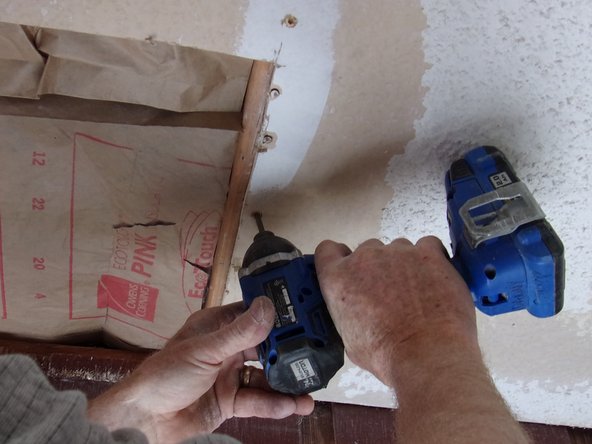


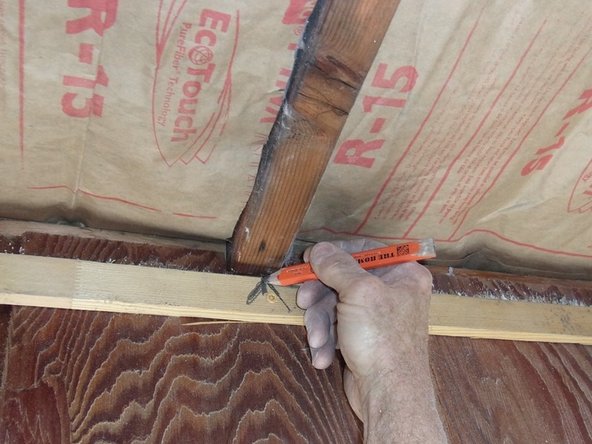

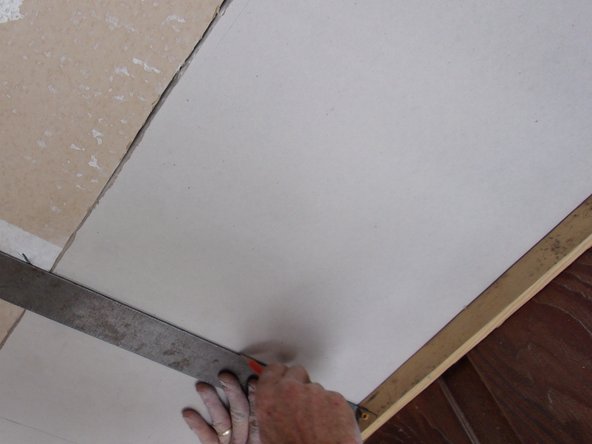

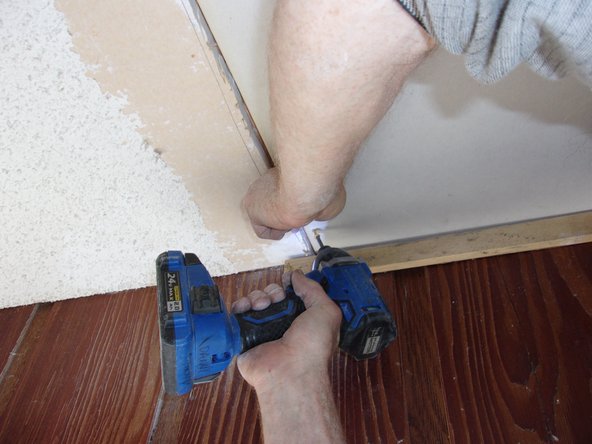
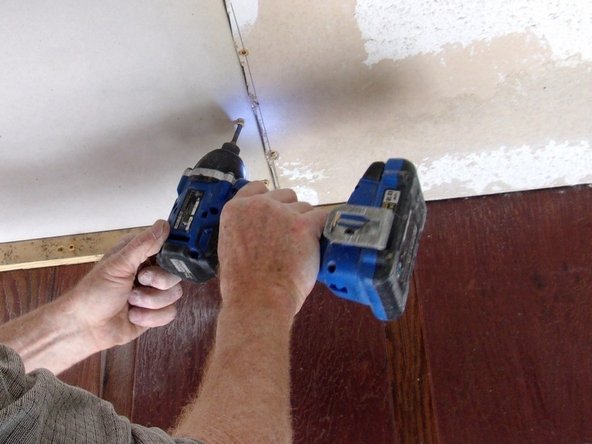




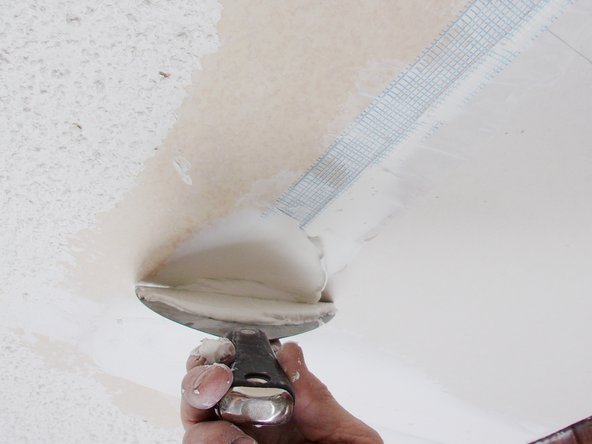
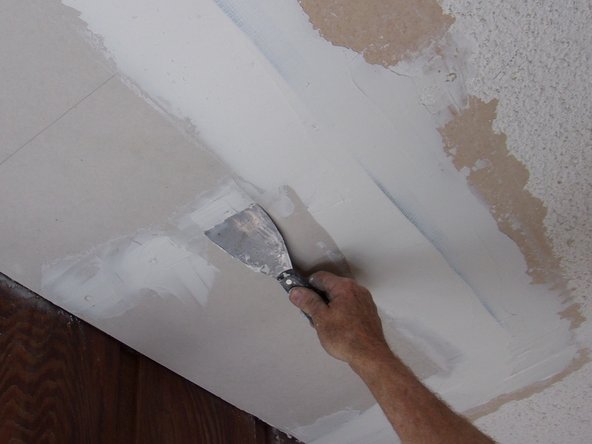

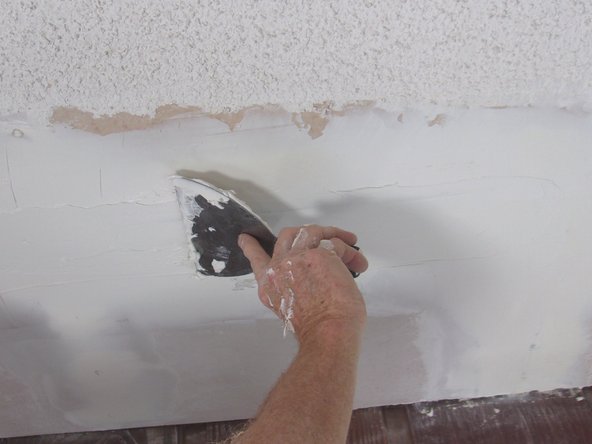
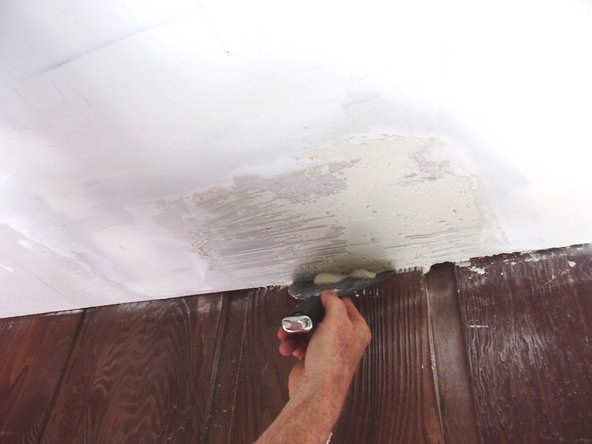
0 Response to "How To Repair A Hole In The Ceiling"
Post a Comment